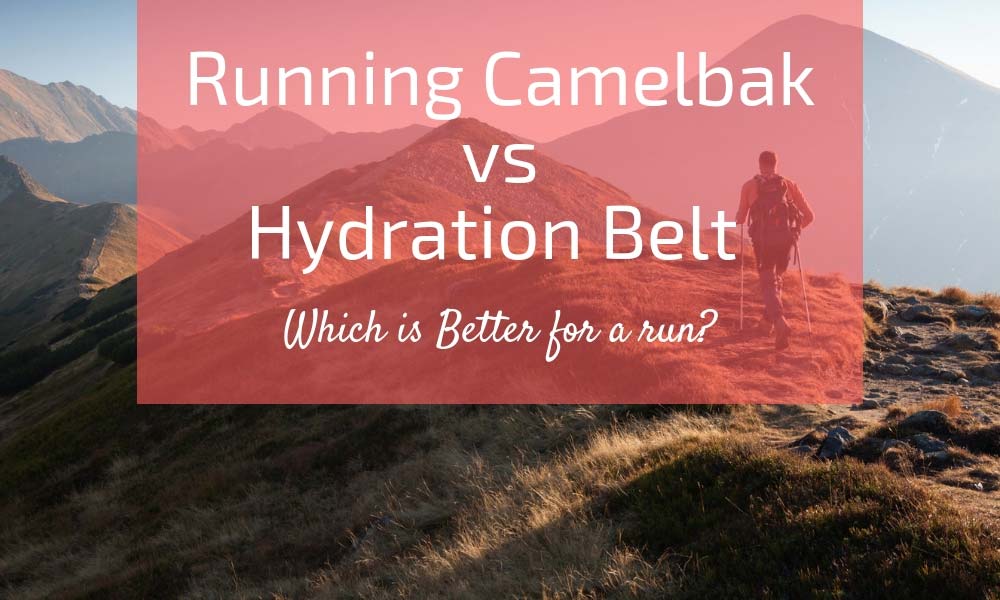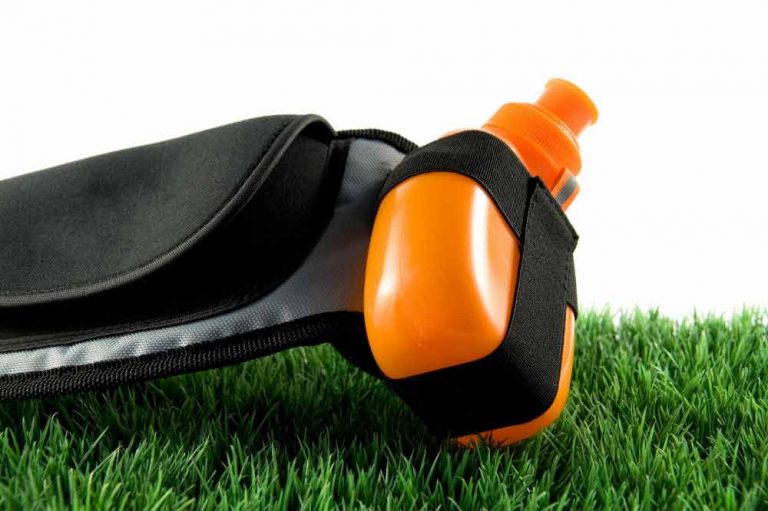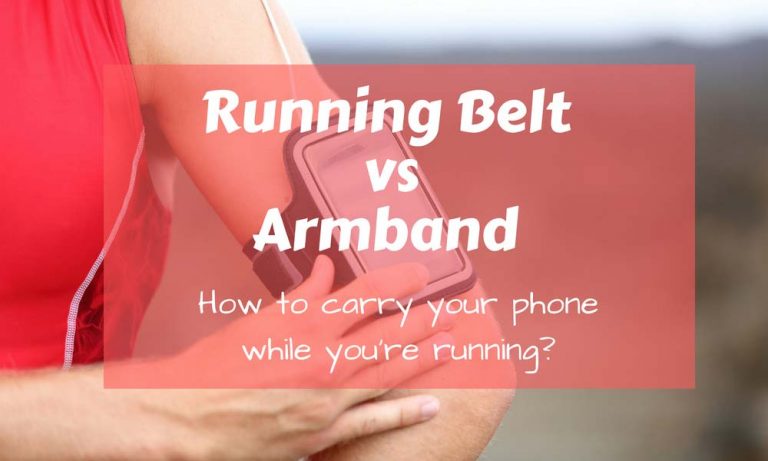Running Camelbak vs Hydration Belt: Which is Better?
What is the difference between a Camelbak and a standard hydration belt? Which product is better for running and why?
It is typical for runners to wonder what is the best solution to carry water during their casual runs or competitions.
Hydration is so important when you run for miles or hours in the summer heat.
In fact, a good hydration system can make the difference between winning first place and coming in second in a race.
Popular Hydration Systems for Runners
Water Bottle
The basic way to start and hydrate yourself during a run is with a handheld water bottle. It’s easy to grab a handheld water bottle and head out.
However, running with a bottle in your hand is not comfortable or efficient at all. It can lead to bad running form, and it doesn’t help in carrying your phone with you.
Besides, if you need a lot of water during a run or race, one bottle may not be enough.
Hydration Belt
A hydration belt made for running is handy as you no longer need to carry water bottles in your hand.
You can just place bottles on your belt and pull them out only when you need to hydrate.
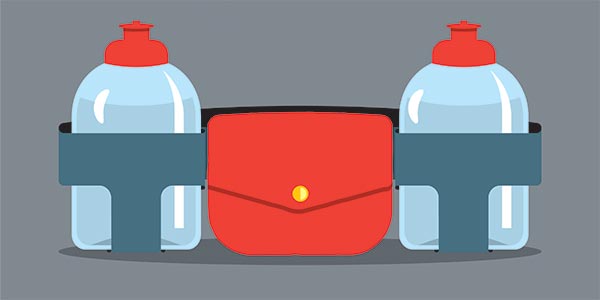
Nevertheless, you need to make sure you get a quality hydration belt that keeps the bottles firmly in place and that does not hinder you when you run.
Camelbak Running Vest
The next hydration system is a Camelbak running vest or pack. It is also called a hydration pack, or running backpack.
Camelbak’s are quite lightweight, and they stay out of the way securely on your back.
With straps on the chest and usually also on the waist, they are bounce-free, even when the water reservoir, bladder, is full.
They are meant to keep you hydrated particularly on longer runs. You don’t even have to worry about opening a water bottle when wearing a Camelbak.
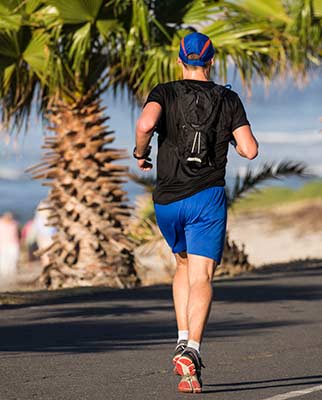
They typically have a long hose, that comes over your shoulder from the bladder. At the end of the hose, there is a self-sealing bite valve.
You just place the valve in your mouth, bite gently, suck, and start drinking.
This allows you to hydrate while you run efficiently.
Besides, a Camelbak can hold up to two liters of water (some even more, depending on the model).
The side pockets with zippers are big enough to stuff full of energy gels etc.
Running Camelbak vs Hydration Belt – Pros and Cons
Hydration Belt – Pros and Cons
The waist belt with water bottles is a practical solution during short to medium runs (up to 2 hours). It can typically carry two small water bottles, so you have enough water to last you a while.
In most cases, you don’t have to waste time at the aid station to refill the bottles during your runs.
If you choose a quality hydration belt, the bottles are ergonomic and stay put on the belt.
Some straps also have one or two pockets where you can store your smartphone, small wallet, and energy gels.
A running belt is handy compared to a backpack, but there are also some drawbacks. Most people will find it somewhat uncomfortable to run with heavy water bottles around their waist.
If the belt bounces around while you run, you will start to hate it very quickly.
Another problem is the slushing sound made by the water in the bottles while you run, which can become annoying.
Because of the constant up and down motion, the hydration belt may start to loosen itself, quickly becoming a distraction and beginning to feel very uncomfortable.
And obviously, you don’t want to lose time and energy fastening your belt during a race.
One drawback with some hydration packs is that the water bottles are too far on the sides, so your wrists might accidentally hit them while running.
Camelback – Pros, and Cons
The Camelbak stays on your back – as its name suggests – and carries lots of water without a bounce. You can drink while you run without having to stop or focus on opening a water bottle.
And as they usually have both shoulder straps and a waist belt, they don’t put too much weight on your shoulders.
Also, the combination of straps and belts makes the Camelbak stable even when running at full speed.
Unlike a hydration belt, the Camelbak system comes with several pockets that have ample space for storage.
You can safely store your phone, keys, wallet, and even gels, food, and first aid items. You can also have larger models to stuff an entire change of clothes.
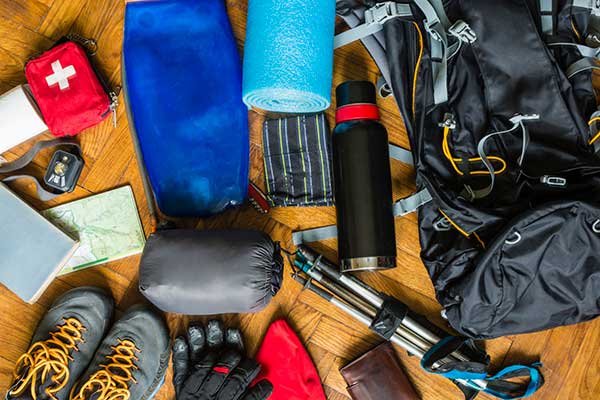
Because this hydration system can carry so much water, it is beneficial on long runs of over 2 hours.
You don’t have to stop by the aid station for a refill during the race, which gives you an advantage over the competition.
There are also a couple of drawbacks to using a Camelbak. Some people find it uncomfortable to carry something on their shoulders.
Also, because the backpack stays so close to your back during running, it tends to cause chaffing on the shoulders.
The Camelbak also prevents airflow and makes you sweat more during hot summer days.
The Bottom Line
Considering all the pros and cons, we consider the Camelbak hydration system to be more efficient and more comfortable than the traditional hydration belt.
It does not hinder your movements and its large capacity saves your precious time – time that can win you the race!
The “running Camelbak vs. hydration belt” is a discussion among novice and experienced runners alike. Some prefer the traditional hydration belt, while many others swear by the Camelbak, or similar.
Of course, many runners prefer the plain old handheld water bottle – there is nothing wrong with this with shorter runs.
In many ways, Camelbak is the winner here. It can do so much more.
It can store much more water than the belt with bottles. This means you do not have to waste time refilling your bottles at the aid station. It can carry much more stuff comfortably, including gels, first-aid items, and even some spare clothes.
The Camelbak distributes the weight evenly across your back thanks to its shoulder straps and waist belt.
Camelbak stays fastened and does not require any adjustments. It will not bounce around and will not hinder your movements. A hydration belt with water bottles will tend to loosen itself during the long run.
We find the Camelbak hydration system to be more efficient and more comfortable than the traditional hydration belt for hydration needs.
It does not hinder your movements, and its large capacity saves your precious time – time that can win you the race!

